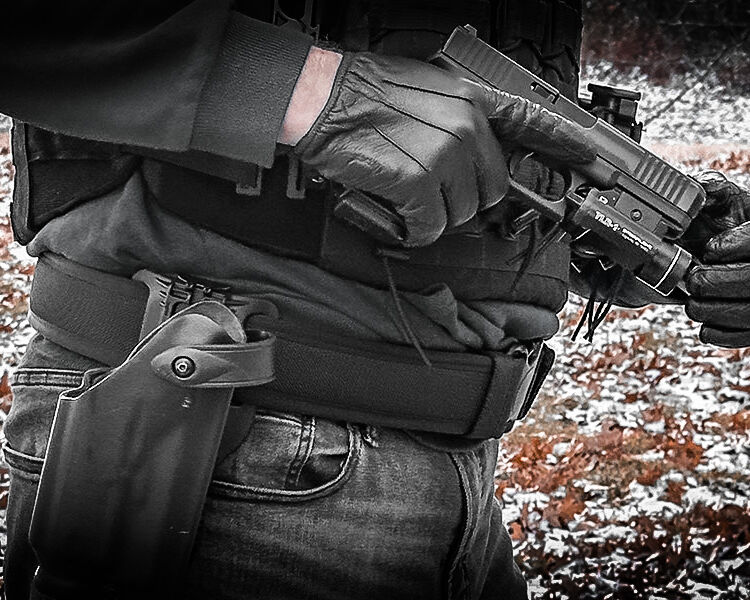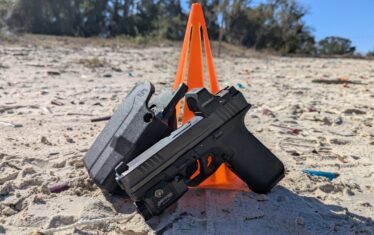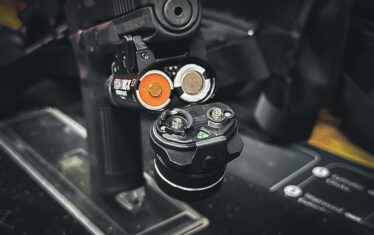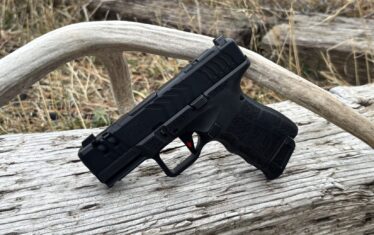So, you’ve got your favorite gun all picked out, and now you’re staring at a wall of holsters like a kid in a candy store. But here’s the dilemma: Do you go for a holster that’s Fort Knox on your hip or one that lets you draw your gun like a gunslinger in a spaghetti western?
Finding the balance between draw speed and holster security can be a real headscratcher. It’s like trying to decide where to eat when you’re hungry and everything sounds good. You have to choose something, but you just can’t make up your mind…
But hey, who says you can’t have your cake and eat it too? It’s possible to have a good secure holster with multiple retentions and be fast at the draw.
The key is finding a middle ground that offers both retention and speed. You want a holster that keeps your firearm secure, but also allows for a quick draw when you need it most.

It’s not about choosing one holster over the other; it’s about finding the perfect holster and combining the right training. Training builds up muscle memory, which is vital when using a holster with any type of retention. Let’s break down why both elements are crucial and how you can achieve that perfect balance.
Why Holster Retention Matters
We hit the range to practice our firearms skills and often have some friendly competition. There are a ton of drills designed to help improve our accuracy, speed, shooting while moving, etc. But what if we never even get the chance to draw our firearm?
Most shootings take place at less than seven yards, which means the bad guy is already close when an incident unfolds. It’s prudent to consider what you will do if he tries to reach for your firearm before you realize what’s going on.
A holster’s retention design is intended to keep the gun securely in place until you intentionally draw it. And I’m not talking about passive retention, I’m specifically talking about Safariland’s legendary Retention Level system for duty holsters. This type of system is not just about keeping the gun in place; it’s also about preventing someone else from grabbing it.

Years ago, a deputy at my agency was involved in a pursuit of a stolen vehicle. The suspect got out of the vehicle and ran on foot for a short distance before turning and running at the deputy. When the Taser failed to stop him, the suspect attacked the deputy and began pulling on his gun.
After a lengthy hand-to-hand confrontation, the deputy eventually pushed the suspect backward and was able to draw his firearm. Even though the suspect was unable to pull the firearm from the deputy’s holster, it only took the deputy a split second to draw the gun. In this case, three levels of retention protected his life, and also allowed him to draw it quickly.
Holster retention levels
If you have not read about Safariland’s retention levels before, our Holster Security Mechanisms article explains it in detail.
Ranging from from Level I to Level IV, each level offers increasing security. When ordering a holster from Safariland, you can find holsters with one or multiple levels, depending on what you are comfortable with.
I carried a Glock 17 in a level three Safariland duty holster for more than a decade. Because of this, drawing the gun from the holster feels natural and quick, even though it has three levels of retention.
Why all these levels?
Different situations require different levels of holster security. Multiple retention levels allow for flexibility, ensuring that your firearm is secure no matter the situation.
A police officer, for example, might need a Level III or IV holster to prevent a suspect from grabbing their firearm during a struggle. On the other hand, a civilian might find a Level II holster sufficient for everyday carry.
Why Speed Matters
Speed is just as important as retention when it comes to holsters. In a self-defense situation, every second counts. The average person’s response time for a visual stimulus is 0.25 seconds. This is the time it takes for your brain to process a threat and for your body to react. That might not sound like much time, but in a life-or-death situation, a fraction of a second can make all the difference.
People who are concerned with too much retention on their holster fear it might take too long to draw the firearm. And no matter how accurate you are or how much ammo you have, if you’re too slow to react, things can go south quickly. That’s why it’s essential to have a holster that allows for a quick, smooth draw.
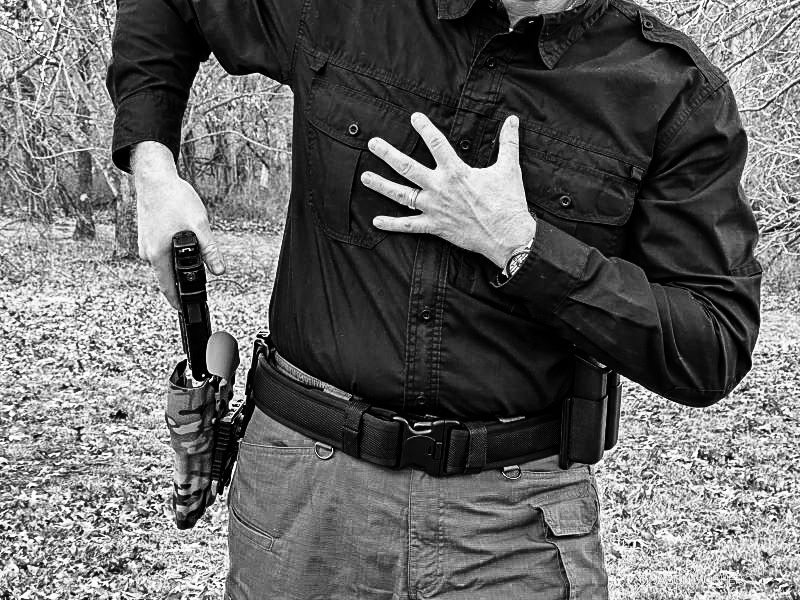
Being fast in a self-defense situation isn’t just about drawing your firearm quickly. It’s also about being able to present it in a controlled manner. You need to be able to get your firearm out of the holster and into a firing position as quickly as possible. This requires practice and the right equipment.
A good retention holster should allow for a smooth draw while keeping it secure until you draw it. It’s completely rational to assume multiple locking devices on a holster would slow this process down. The trick, however, is to design those devices in such a way that you can work them quickly and others can’t.
The Perfect Balance Comes with Training
Finding the perfect combination of speed and holster security is all about using a quality holster with the appropriate retention level and then practicing with that holster.
You need retention to keep your firearm safe, but you also need speed when drawing your weapon. The more you practice, the faster you’ll get. Start by finding a holster that is made for your firearm. For retention devices to work correctly, the holster needs to be made for that specific firearm. Safariland has a handy holster finder to help you select a holster made for your gun.
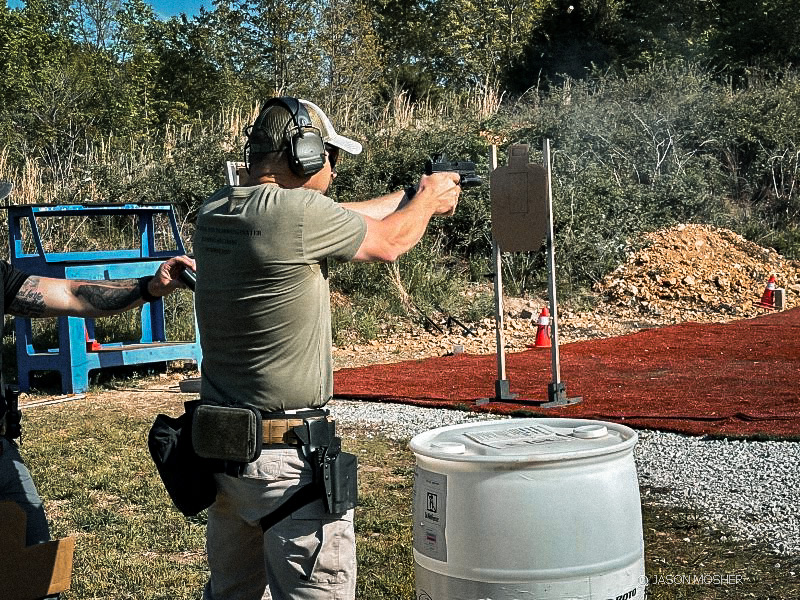
As you practice, you will create muscle memory, which allows your body to react without you needing to tell it what to do. Anything you do repeatedly will create muscle memory. This is why it’s so important to train with the holster you plan to carry.
It’s also important to practice different scenarios. Draw from different positions, such as standing, sitting, and lying down. Practice drawing with your non-dominant hand in case your primary hand is injured or occupied. The more scenarios you practice, the more prepared you’ll be for any situation.
As you practice drawing your firearm, disengaging the locks will become a quick and efficient process.
Drills to Increase Speed with Your Retention Holster
To increase your speed with a retention holster, you need to incorporate specific drills into your training routine. Here are some basic drills you can use to help build up that muscle memory for your duty-rated holster.
Retention Release Drill
Before you do a full draw from the holster, practice disengaging your holster’s retention mechanisms. Start slowly, focusing on mastering the movements. As you become more comfortable, increase your speed. Each retention requires a separate action on the holster. So for a Level 1 retention holster, you need to practice disengaging that one device.
Dry Fire Draw
Start with your firearm unloaded and practice drawing it from the holster. Focus on making the motion smooth and fast. Once you’re comfortable, add a timer to see how quickly you can draw and present your firearm. Of course, you should make sure you are pointing the firearm in a safe direction after making sure it is safe and unloaded.
Seated Draw
Practice drawing your firearm while seated. This simulates situations where you might need to draw your weapon while sitting in a car or at a desk.
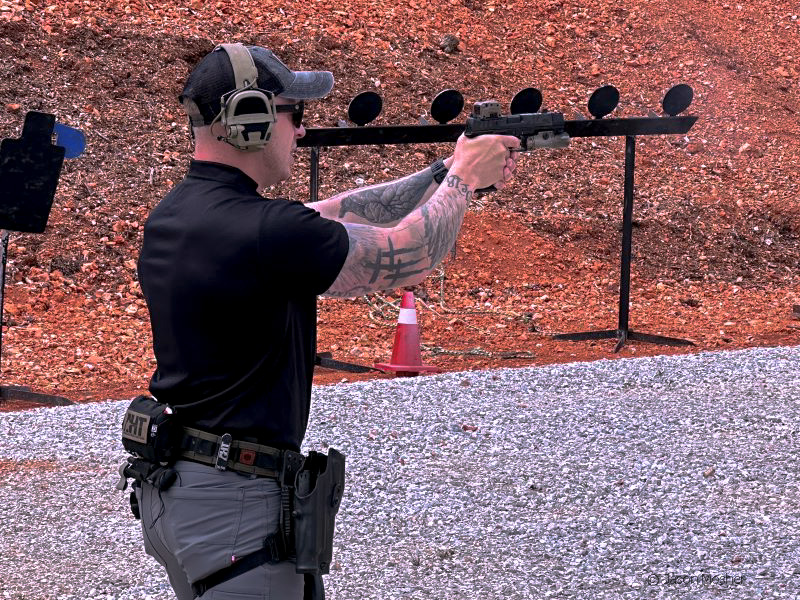
Non-Dominant Hand Draw
Practice drawing your firearm with your non-dominant hand. This prepares you for situations where your primary hand might be injured or occupied. This can be more difficult with a multi-retention holster, but it’s possible to do.
Bill Drill
You can practice many holster drills at home without shooting any ammo. But when you want to incorporate live ammo on the range, the Bill Drill is a simple one to do. Start with your hands at your side and on the command, draw and fire six rounds as fast as possible at the target from 7 yards away.
El Presidente Drill
Start with your hands above your head and back to the target. On the signal (using a shot timer) turn, draw, and fire two shots into each of three targets. Drop the mag, reload, and fire two more shots into each target. This is a great drill because it focuses on drawing, target acquisition, and speed. I like to do this drill at about 10 yards.
Shuffle, Draw, Fire
This is a simple drill I’ve always done with the guys at work. We place two targets about seven yards out and 5 yards apart. Start directly in front of the left target. On the command, move to the right, drawing your holster at the same time. When you are directly in front of the right target, fire one or two rounds.
Now repeat the drill moving right to left. This is great practice for drawing your firearm on the move and firing when you reach your target. You can also change the distance between targets if desired.
Does your holster have retention?
When you need a firearm, you need it quickly, so thinking about devices made to keep your gun in the holster may sound counterproductive. However, carrying a firearm is a great responsibility and making sure your gun stays secure in the holster until you intend to draw it is part of that responsibility.
By understanding the importance of retention, recognizing the need for speed, and committing to regular training, you can achieve the perfect balance.





